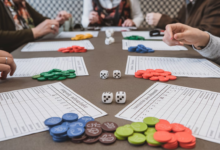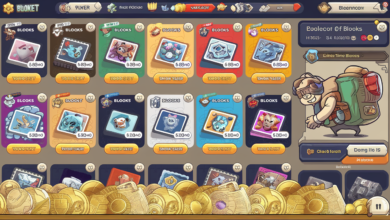Then Again, I Might Be Wrong: Understanding the Mystery Behind The New York Times Crossword Clue

Then again, I might be wrong, is a phrase we’ve all heard before, but what does it mean in the context of a crossword puzzle? If you’ve come across this clue in The New York Times crossword, you’re not alone in wondering what answer fits. Crossword puzzles often challenge our thinking, pushing us to consider all possible answers – but sometimes, just like the phrase suggests, we might get it wrong.
The clue “Then again, I might be wrong NYT” has left many puzzlers scratching their heads. It’s one of those tricky clues that could lead to a variety of interpretations. In this blog post, we’ll break down the meaning, potential answers, and offer tips on how to approach such crossword challenges.”
Breaking Down the Clue: What Does ‘Then Again, I Might Be Wrong NYT’ Really Mean?
The phrase “Then again, I might be wrong” is something we often say when we’re unsure of something. But how does this apply to crossword puzzles, especially in The New York Times crossword? When you see this clue, it’s giving you a hint that something may not be as straightforward as it seems. This clue asks you to think carefully and challenge your first instinct.
Crossword clues are designed to make you think and stretch your imagination. They sometimes use wordplay or tricky phrases, and “Then again, I might be wrong” is one of those tricky clues. It can be telling you that the answer is not obvious and that you need to think outside the box. The challenge here is to consider all the possibilities and not get stuck on one answer.
In the context of The New York Times crossword, clues like “Then again, I might be wrong” can often have multiple meanings. This can make the clue more difficult for people who might be new to solving crosswords. However, understanding how crossword clues work is the key to cracking them. Sometimes the answer is a word or phrase that fits perfectly with the theme or style of the puzzle.
So, the next time you see the clue “Then again, I might be wrong NYT”, don’t be afraid to think a little differently. It might not be as simple as you think, but with the right approach, you can figure it out.
How Crossword Puzzles Challenge Our Thinking: A Look at ‘Then Again, I Might Be Wrong NYT’

Crossword puzzles are not just games; they are challenges that require a sharp mind and a lot of creativity. “Then again, I might be wrong NYT” is a perfect example of how these puzzles challenge the way we think. They push us to analyze words, their meanings, and how they can fit into different situations.
When solving crosswords, it’s common to see clues that aren’t as simple as they appear. The phrase “Then again, I might be wrong” reminds us that things may not be as clear-cut as they seem. In crossword puzzles, this phrase encourages solvers to reconsider their answers and be open to other possibilities. Puzzles can be tricky, and it’s easy to get stuck if you don’t approach them with the right mindset.
Many solvers make the mistake of rushing through the clues without fully thinking them through. “Then again, I might be wrong” serves as a reminder to slow down and consider multiple solutions. This strategy helps you avoid errors and helps you become a better crossword solver in the long run.
Taking your time and thinking carefully is an important part of crossword puzzles. With “Then again, I might be wrong” as a clue, the goal is to challenge your thinking and make you question your first instincts. It’s not about being wrong; it’s about learning and growing through the process.
Tips for Solving ‘Then Again, I Might Be Wrong NYT’ in The New York Times Crossword
Crossword puzzles can seem difficult at first, but once you understand the patterns and techniques used by puzzle creators, solving them becomes much easier. The clue “Then again, I might be wrong NYT” is one example where a little strategy can go a long way. Here are some tips to help you solve this tricky clue and improve your overall puzzle-solving skills.
Don’t Rush
Take your time and read each clue carefully. When you see “Then again, I might be wrong NYT”, it’s important not to rush to an answer right away. Think about the words carefully and how they could fit in the puzzle. Sometimes, slowing down can help you spot the correct answer more quickly.
Consider Multiple Answers
Crossword clues often have more than one possible solution. The phrase “Then again, I might be wrong” suggests that there could be a second or even third answer. Don’t just focus on one word; think about synonyms or related words that might fit the puzzle.
Use Crossword Solving Tools
If you’re stuck, don’t hesitate to use crossword-solving tools like online word finders. These tools can help you find possible answers based on the number of letters you have. But remember, the goal is to solve the puzzle yourself. Use tools as a last resort.
Check the Puzzle’s Theme
Many crossword puzzles, especially in The New York Times, have a theme that can give you clues about the answers. The theme might relate to a particular topic or word pattern. When solving a tricky clue like “Then again, I might be wrong”, it’s helpful to consider how the answer might fit into the overall theme.
Common Mistakes Solvers Make When Encountering ‘Then Again, I Might Be Wrong NYT’

When solving any crossword puzzle, it’s easy to make mistakes. “Then again, I might be wrong NYT” might make you second-guess yourself, but sometimes, solvers make certain common mistakes that can lead them down the wrong path. Here are a few errors to avoid and tips to correct them.
Jumping to Conclusions
One of the biggest mistakes people make is jumping to conclusions too quickly. The clue “Then again, I might be wrong” encourages you to keep an open mind. Instead of rushing to fill in the answer, take a moment to think about all possible options.
Ignoring the Puzzle’s Theme
Some solvers forget to consider the overall theme of the crossword. The New York Times crossword often has a theme, and missing this clue can make the puzzle much harder. Pay attention to the theme to make sure your answers fit in with the rest of the puzzle.
Not Double-Checking Your Work
Another mistake is not reviewing your answers after filling them in. It’s easy to miss small details, like letter placement or word length. Always double-check your answers to avoid making simple mistakes that can throw off the entire puzzle.
Not Using Crossword Strategies
If you’re stuck, try using crossword-solving strategies. For example, working on easier clues first can help you get started and fill in more letters, making it easier to tackle the harder clues like “Then again, I might be wrong”.
Conclusion
Crossword puzzles can be difficult, but they are also a lot of fun. The clue “Then again, I might be wrong NYT” is a perfect example of how crosswords encourage creative thinking. It teaches you to reconsider your answers and think about the puzzle from different angles. The key to solving any puzzle is to stay patient, be flexible, and not give up.
So, the next time you face a challenging clue, remember that it’s okay to be wrong and that mistakes are part of the process. Solving crosswords is about learning, improving, and having fun. Whether you are a beginner or an experienced solver, keep practicing, and you’ll get better with each puzzle.
FAQs
Q: What does “Then again, I might be wrong NYT” mean in a crossword
A: It means the answer might not be as clear as it seems, and you should consider multiple possibilities.
Q: How can I solve the “Then again, I might be wrong NYT” clue
A: Take your time, think of different answers, and use the puzzle’s theme to guide you.
Q: Why is “Then again, I might be wrong” a tricky clue
A: It asks you to question your first answer and look for other possible solutions.
Q: Can I use crossword-solving tools
A: Yes, but only after trying your best to solve the puzzle on your own.
Q: How can I improve at solving crosswords
A: Practice regularly, use strategies, and pay attention to the puzzle’s theme.





